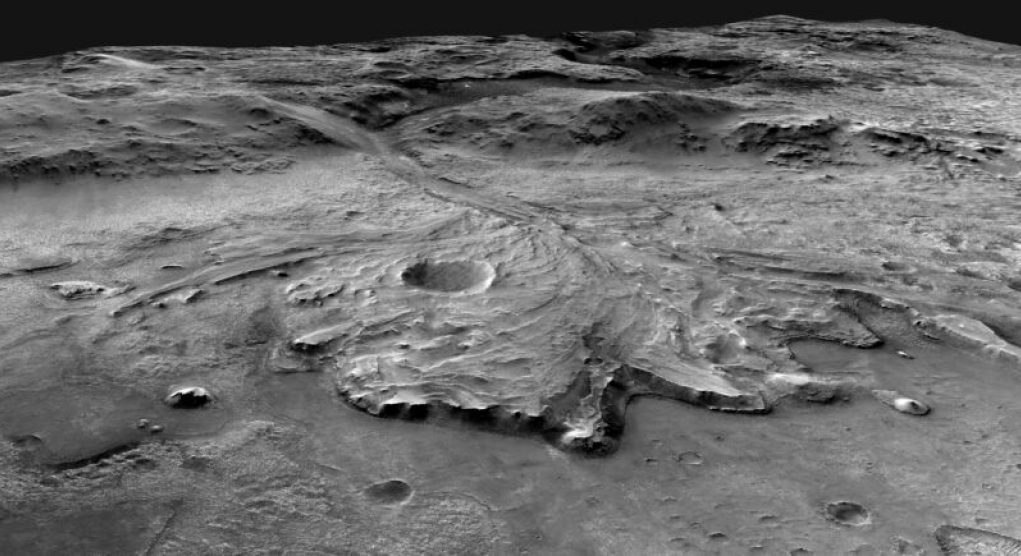Organic chemicals, primarily composed of carbon and hydrogen, are the building blocks of life. They are not only abundant on Earth but also widespread in the Universe. However, their presence alone does not guarantee the existence of life. This poses a challenge in the search for evidence of life on Mars, where organic chemicals have been found despite the harsh environment.
Yet, we are still uncertain if these organic molecules are indicative of life. Currently, we lack the capability to analyze Martian rocks, isolate the molecules, and determine their exact composition. In the meantime, our best approach is to gather preliminary information about these molecules and understand their context within the Martian environment. Fortunately, the Perseverance rover has made significant progress in this direction through its imaging results.
Ask SHERLOC
The instrument at the center of this new research is aptly named Scanning Habitable Environments with Raman & Luminescence for Organics & Chemicals (SHERLOC). Equipped with a deep-UV laser, SHERLOC can excite molecules to fluoresce, and the emitted wavelengths provide insights into the types of molecules present. Additionally, it can perform Raman spectroscopy simultaneously.
Together, these capabilities offer information about the molecular composition, although they may not identify specific chemicals. Crucially, SHERLOC provides spatial information, revealing the origin of sample-specific signals within a rock. This allows scientists to determine which chemicals are located in the same area of a rock, indicating their likely formation or deposition together.
SHERLOC can analyze rocks simply by being held near them. The recent findings are based on samples from two rock formations in the Jezero crater. In some cases, the imaging was conducted by directly pointing SHERLOC at a rock, while in others, the rock surface and any contaminants were removed by Perseverance before imaging.
Advertisement
SHERLOC has identified various signatures of potential organic material in these samples. Although there were instances where the signatures could technically be produced by specific carbon-lacking chemicals, the researchers lean towards organic materials as the source due to the wide range of organic molecules that could be present.
One notable finding is that the level of organic material varies over time. The deeper, older layer known as Séítah contains only a fraction of the material found in the Máaz rocks above it. The reason for this difference remains unclear, but it suggests that the production or deposition of organic material on Mars has changed over time.
Regional differences
By analyzing different samples and resolving distinct regions within them, the researchers have identified unique signals that appear in multiple samples. While the specific molecules responsible cannot be identified, valuable insights have been gained.
One signal originates from samples containing a ringed organic compound along with sulfates. The most common signal comes from a two-ringed organic molecule associated with various salts, including phosphate, sulfate, silicates, and potentially perchlorate. Another signal is linked to a benzene ring and iron oxides. Two samples contain a different ringed compound.
Overall, these differences are significant, suggesting that there were multiple ways of synthesizing the organics or that they were deposited and preserved under distinct conditions. Many of the observed salts are associated with water-based deposition or water-driven chemical alteration of the rock, further indicating changes over time.
Collectively, these findings argue against the idea that the organic chemicals on Mars were simply delivered by meteorites.
It is important to note that SHERLOC cannot determine the exact nature of these chemicals, so we cannot confirm if any living processes were involved in their creation. However, there is hope for the future. Some of the rocks examined by SHERLOC have been selected for the planned Mars sample return mission. If this mission is successful, we will finally have the opportunity to isolate and study these chemicals on Earth.
Nature, 2023. DOI: 10.1038/s41586-023-06143-z (About DOIs).
On Monday, October 7th, NASA announced a major scientific discovery made by the Curiosity Rover; it had found organic molecules preserved in three-billion-year-old sedimentary rock that was once part of an ancient lake bed on Mars.
The newly discovered molecules consist of complex combinations of carbon, hydrogen and other elements, and while they are not definitive proof of the existence of life on Mars, they may be the necessary precursors to life.
NASA’s discovery came from a sample of mudstone collected by the Curiosity Rover in its fifth year of exploration of the Gale crater on Mars. Scientists were surprised to discover that the mudstone contained preserved remnants of organic compounds, which they believe were formed within the sedimentary rock.
At this time, the organic molecules are only a suggestion of life’s existence on Mars in the distant past. Scientists believe that the discovery of more complex organic molecules could point to evidence of life itself. Therefore, continued exploration and analysis of this type of sediment could ultimately provide proof of past life on Mars.
The Curiosity team believes that its discovery of the organic molecules in water-altered rocks has given hints of a formerly habitable environment and could provide clues to the history of water on Mars.
NASA’s Director of Planetary Science, Jim Green, said that this discovery will help scientists explore the evolution of Mars and the search for biosignatures, and it is providing an improved understanding of the habitability of the planet.
The Curiosity Rover will continue to explore the red planet in search of more evidence or organic compounds. The next step for scientists will be to explore potential sources for the molecules, including the possibility that they originated from a non-biological process.
This exciting new discovery could provide scientists with a better understanding of ancient life on Mars and could help to answer bigger questions about the history of the universe.




















